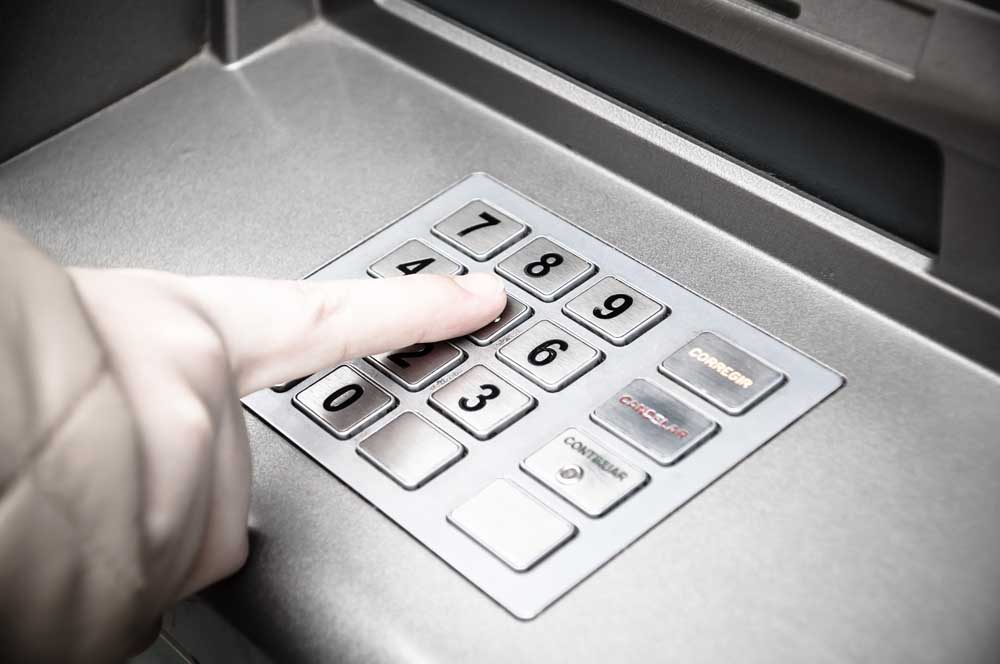ATMs to offer cash without debit card
Published 12:00 am Sunday, October 4, 2015

- Courtesy Fotolia via Tribune News ServiceWith new technology from Fiserv Inc. that’s expected to hit the market next year, you’ll still be able to have access to an ATM even without your debit card.
MILWAUKEE — You’re out of town and realize you don’t have your debit card, and need cash now.
With new technology from Fiserv Inc. that’s expected to hit the market next year, you’d still be able to have access to an ATM.
Here’s how:
You call your bank or credit union, which uses its security checks to confirm your identity. You’re given an 11-digit code by the financial institution, which then transfers you to a system that provides a personal identification number.
When you get to the automated teller machine, instead of inserting a card, you touch a button on the screen and enter the 11-digit number, then your PIN.
“And now you have access to your account, just as if you had your regular plastic,” said David Keenan, senior vice president of network solutions for Fiserv, which is based in suburban Milwaukee and provides technology for the financial services industry.
Fiserv’s new CardFree Cash technology has been successfully tested at a large Florida credit union and is expected to become more widely available in 2016.
It’s another step in the effort by financial institutions to provide convenience as they encourage customers to use ATMs for routine transactions.
However, it’s also likely another step toward the eventual fade of card usage at ATMs, industry experts say.
With a recent rash of “skimming” incidents in southeast Wisconsin illustrating how easily bold thieves can hijack personal account information at ATMs that use cards with magnetic stripes, the arrival of cardless ATMs would likely be welcomed by many.
But, even with advances like Fiserv’s, no one is saying cards are going to disappear in the near term.
“There are a lot of people who wish cards would go away entirely because of stolen credit cards and skimming devices and that kind of stuff. But habits are a hard thing to change,” said bank technology expert Bob Meara, senior analyst with Celent LLC.
Keenan also said the disappearance of debit cards is not on the short-term horizon.
“I don’t see this as something that is a full-on replacement,” Keenan said of CardFree Cash. “There’s just no way. You use your card for so many things, including point of sale. But I think it’s a very valuable way to augment the card.”
More imminent in the financial card world is growing numbers of banks and credit unions issuing cards that contain chips rather than magnetic stripes, making it harder for thieves to steal information and create bogus clone cards.
However, looking further down the road, smartphones — rather than plastic cards of any type — might end up being the way most consumers gain access to ATMs.
“I think we’re headed toward using the mobile phone a lot more often,” said Avivah Litan, a cyber security expert with the research and advisory firm Gartner.
Some banks already are encouraging smartphone use at ATMs. Last spring, BMO Harris Bank introduced its Mobile Cash technology, which allows customers to withdraw money using their smartphones instead of cards.
With that technology, a BMO Harris customer downloads the digital banking app, which includes an option for Mobile Cash. When the customer signs in, the app lets the customer put in the amount he or she wants to withdraw. It will store that info until the customer gets to the ATM.
At the ATM, the customer touches the Mobile Cash option on the video screen. A quick response code appears on the screen. The customer holds the smartphone close enough to let the phone’s camera scan the code. If there’s a match between app and QR for the customer’s account, the requested amount of cash is dispensed. There is no PIN entry or card swipe involved.
Over time, Litan said, said there will be more ATMs responding to smartphones than plastic cards.
“Definitely,” she said. “The card is just a place to put a chip, right? So is the phone. So we’re moving from mag stripe physical cards to chip physical cards, but the phone already has chips in it.”
In the future, smartphone access to ATMs will save financial institutions the expense of issuing cards — and replacing them if breaches occur — and use more-secure authenticators, such as a customer’s fingerprint rather than a PIN, she said.
While the recent news from Fiserv was about the company getting ready to roll out CardFree Cash as a supplement to card usage, the company also already has begun demonstrating technology that uses smartphones to provide ATM access. It allows an ATM to detect, via a bank or credit union customer’s smartphone, if the customer is near the ATM. After authenticating the customer’s identity, the ATM would get ready for a transaction.
“The ATM would see that your phone is there and would say, ‘Hey, do you want to do an ATM withdrawal?’” Kennan said.
The customer then would be prompted to enter his or her PIN.
“Imagine how easy that could be if you’re just going to your local favorite ATM and your mobility app from your credit union interacts and you don’t even have to get your card out of your wallet,” Keenan said.
With no card involved, it becomes difficult for thieves to use skimming devices that capture information from cards. However, crooks are determined to find weaknesses in technology that they can exploit, so the battle for security is constant, Litan said. One weak spot, she said, can be the authentication process that is meant to make sure the ATM user is authorized to use the account.
“Conveniences need better security that is not going to hamper the experience,” she said.






